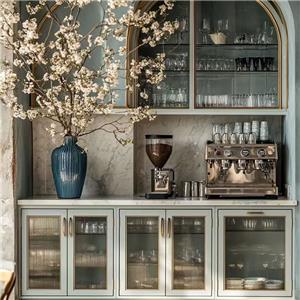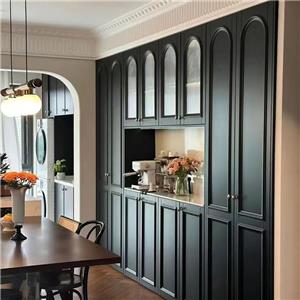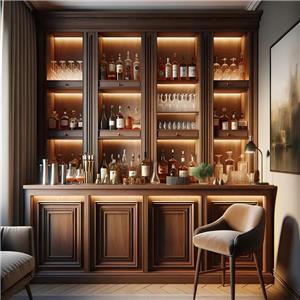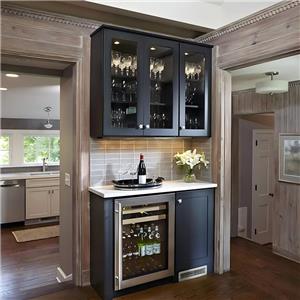Must wardrobes be fixed to the wall?
As one of the core furniture in bedrooms and dressing rooms, wardrobes carry the functions of storage and organization in our daily lives. However, the installation of wardrobes, especially whether they must be fixed to the wall, has always been a difficult problem faced by many families in decoration and furniture arrangement. Some people think that fixing wardrobes to the wall can help improve safety, especially when there are children at home, while others think it is not necessary.
This news will explore this topic in depth to help you understand the significance and necessity of fixing wardrobes to the wall.
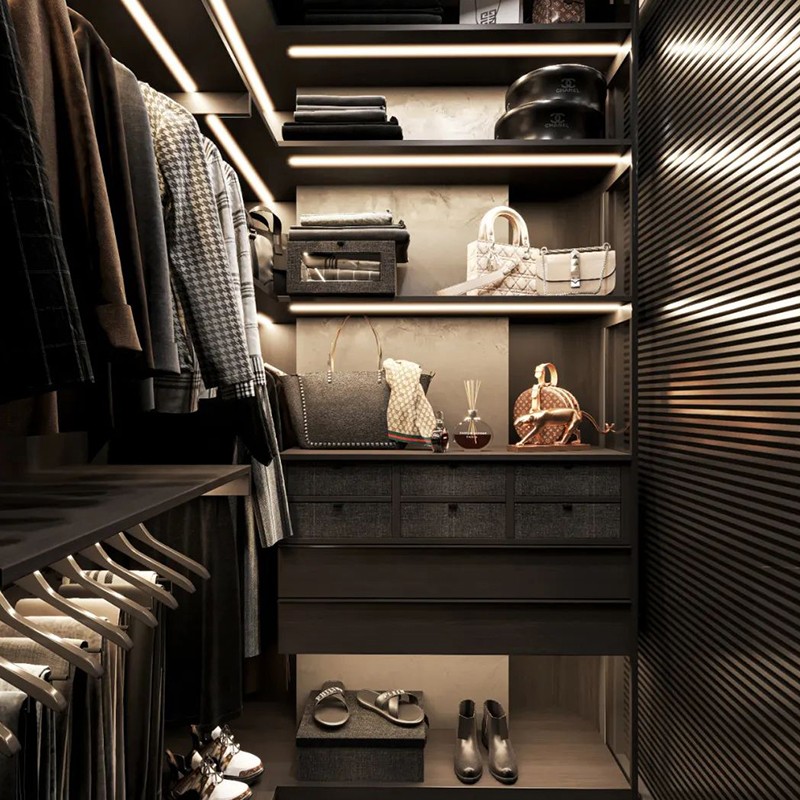
Why do people consider fixing wardrobes to the wall?
Wardrobes, especially larger ones, usually carry a large number of clothes, shoes, accessories and other items. This storage function gives the wardrobe a huge weight, especially when the wardrobe is high or the design is more complex, the wardrobe may be at risk of tipping over due to unstable center of gravity. Therefore, for safety and stability reasons, many people choose to fix the wardrobe to the wall to prevent accidents.
Avoid the risk of tipping
Tall furniture, such as wardrobes, bookcases, etc., may tip over when they are impacted by external forces if they are not firmly fixed to the wall. This may not only cause damage to furniture, but more importantly, it may endanger the safety of family members, especially when there are children or pets. Accidental collisions or climbing behaviors increase the risk of wardrobe tipping over. Fixing the wardrobe to the wall is one of the effective ways to prevent such accidents and can provide more stable support.
Improve the stability of furniture
Wardros, especially taller ones, have a relatively high center of gravity. If they are not fixed to the wall, they are prone to shaking or tilting due to uneven placement, uneven ground or changes in center of gravity (such as uneven load-bearing between upper and lower layers). By fixing the wardrobe to the wall, the wardrobe can be more stable during use and is not easily disturbed by the ground or other furniture.
Optimize space layout
For some small-sized families, fixing the wardrobe is not only for safety, but also for saving space. Fixing the wardrobe firmly to the wall can make the wardrobe close to the wall, avoid unnecessary gaps between the furniture and the wall, and thus improve space utilization.
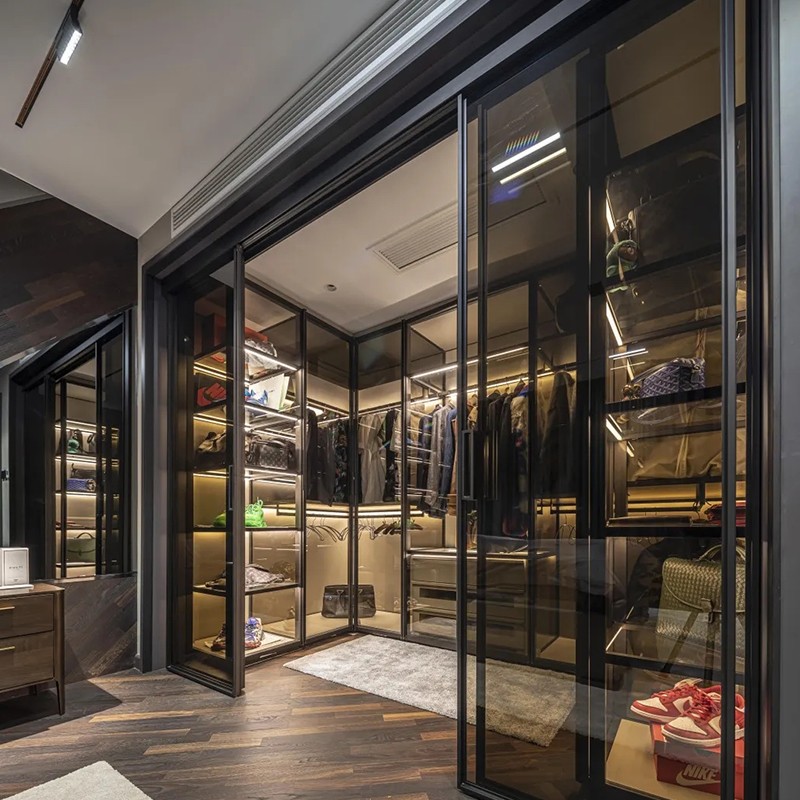
What are the advantages and disadvantages of fixing the wardrobe to the wall?
Although fixing the wardrobe to the wall has many advantages, it is not the installation method that everyone will choose. Next, we will analyze the advantages and disadvantages of fixing the wardrobe to the wall in depth to help you make a better decision.
Advantages of wardrobe fixed to the wall:
1. Improve safety
2. Improve overall aesthetics
3. Increase the service life of the wardrobe
Improve safety
As mentioned above, fixing the wardrobe to the wall can effectively prevent accidental tipping, especially when there are children or pets in the family, fixing the wardrobe can greatly reduce the probability of furniture accidents.
Improve overall aesthetics
After fixing the wardrobe to the wall, the wardrobe can usually be seamlessly connected with the wall, reducing the appearance of gaps. This design can make the room look more concise and increase the visual unity of the space. For those families who pursue minimalist or modern design styles, fixing the wardrobe helps to keep the room tidy.
Increase the service life of the wardrobe
When the wardrobe is fixed to the wall, the stability of the wardrobe is greatly improved, reducing the loss of the wardrobe structure due to tilting or shaking. Especially for some more expensive custom wardrobes, fixed installation helps to extend its service life and keep it in good use.
Disadvantages of wardrobe fixed to the wall:
1. Lack of flexibility
2. Possible damage to the wall
3. Complex installation
Lack of flexibility
Once the wardrobe is fixed to the wall, its position cannot be easily changed. If you want to adjust the room layout in the future or move, a wardrobe fixed to the wall may cause inconvenience. Compared with movable furniture, fixed wardrobes are more limited in space adjustment.
May damage the wall
During the installation process, fixed wardrobes need to drill holes in the wall or use brackets, which may cause damage to the wall. Especially for renters, this fixing method may not comply with the provisions of the lease contract, resulting in the landlord not allowing installation, or the need to repair the wall when moving out.
Complex installation
Compared with directly placing the wardrobe, fixed wardrobes require more installation tools and techniques. You may need to ask a professional furniture installer to complete this work, adding additional installation costs and time.
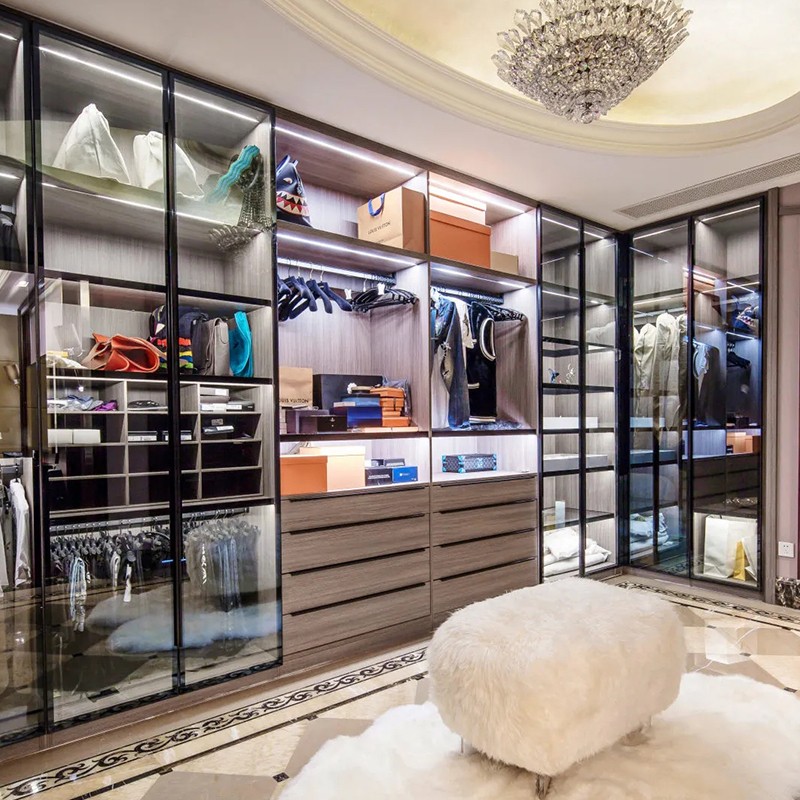
What are the things to pay attention to when fixing the wardrobe?
If you decide to fix the wardrobe to the wall, here are some points you need to pay attention to during the installation process.
Wall material
The material of the wall determines whether you can fix the wardrobe to the wall and how to fix it. If the wall is a load-bearing wall, you can directly drill holes to install brackets or screws; if the wall is a non-load-bearing wall (such as a gypsum board wall), you need to use a lighter fixing method, or choose a more flexible installation solution, such as using wall reinforcement materials to avoid wall damage.
Wardrobe weight and design
The weight and design of the wardrobe also affect the fixing method. Heavier solid wood wardrobes require more sturdy brackets and screws to ensure safe fixing; while lightweight modern and simple wardrobes can be fixed in a simpler way. Make sure that the accessories used during installation can withstand the weight of the wardrobe to avoid fixing failure due to excessive weight.
Special considerations for families with children and pets
If there are children or pets in the house, in addition to fixing the wardrobe to the wall, you should also consider the safety of daily use. For example, add some guardrails in the lower area of the wardrobe to prevent children or pets from entering the wardrobe and causing unnecessary risks.
Tools and professional installation
Installing a wardrobe requires some specific tools, such as electric drills, screws, fixing brackets, etc. If you are not familiar with these tools, it is best to ask a professional installer to complete it. Especially for the installation of large wardrobes, it involves wall drilling and weight calculation. Professional installation can ensure that the wardrobe is fixed safely and reliably.
Fixed or unfixed wardrobe: Which is the best?
We have learned many benefits and precautions of fixed wardrobes. Next, let's take a look at the performance of unfixed wardrobe design in the home.
Advantages of unfixed wardrobe
● Easy to move: Unfixed wardrobes can be moved at any time according to needs, and are flexible. If you like to adjust the home layout frequently, or live in a rented house, then unfixed wardrobes are a good choice.
● Simple installation: Compared with fixed wardrobes, unfixed wardrobes can be placed directly on the ground without drilling holes or using brackets, and the installation is relatively simpler and faster.
● Friendly to renting: In the case of renting a house, the landlord usually does not allow drilling holes in the wall, and fixed wardrobes may violate the lease contract. Therefore, choosing an unfixed wardrobe is more friendly to renters.
Disadvantages of unfixed wardrobes
● Low safety: Unfixed wardrobes are not supported by walls, especially taller wardrobes, and the center of gravity is easily unstable. They may fall down when subjected to external force or impact, increasing potential safety hazards.
● Easy to shake: If the wardrobe itself is not designed to be stable enough, or the ground is uneven, the unfixed wardrobe may shake during daily use, affecting the user experience.
● Poor visual effect: Unfixed wardrobes usually leave gaps between the wall, which not only wastes space, but also may affect the overall appearance of the room.
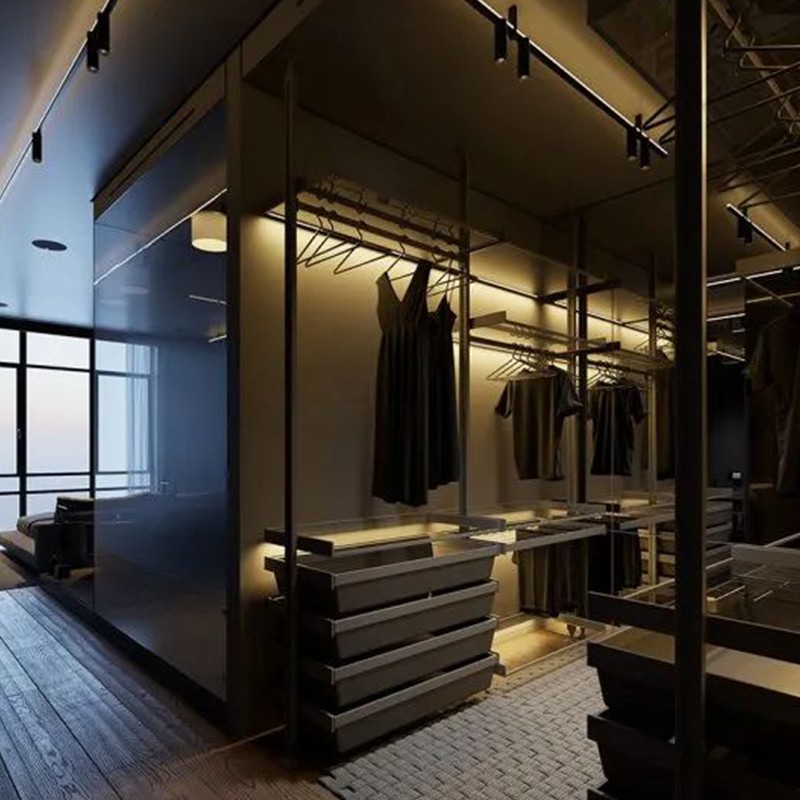
How to determine whether your wardrobe needs to be fixed?
Ultimately, whether the wardrobe needs to be fixed to the wall depends on multiple factors. Here are a few key questions to help you determine whether your wardrobe needs to be fixed:
● Is the height of the wardrobe more than 1.5 meters?
Wardrobes higher than 1.5 meters usually have a greater risk of tipping over, especially when the load is heavy or the center of gravity is unstable during use. Fixing it to the wall is an effective way to ensure safety.
● Are there children or pets at home?
If there are children or pets, their activities may cause the wardrobe to be hit, increasing the risk of tipping over. Therefore, the safety of family members should be the primary consideration for fixing the wardrobe.
● What is the material and weight of the wardrobe?
Wardrobes made of solid wood or high-density panels are heavy. If they are not fixed to the wall, they are prone to tilting due to unstable center of gravity. In this case, a fixed wardrobe can avoid safety hazards.
● Does the spatial layout of the room need to be adjusted flexibly?
If you often change the layout of the room, or the room itself has limited space and cannot fix large furniture, then choosing an unfixed wardrobe may be more suitable for your lifestyle.

